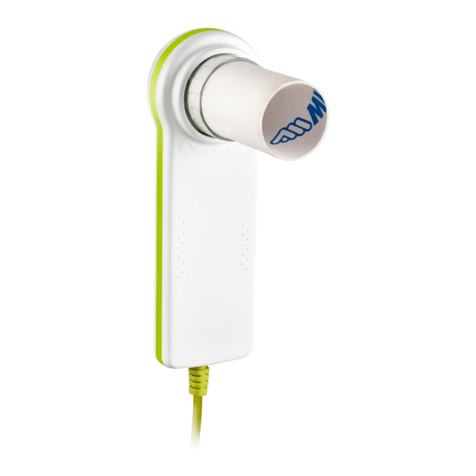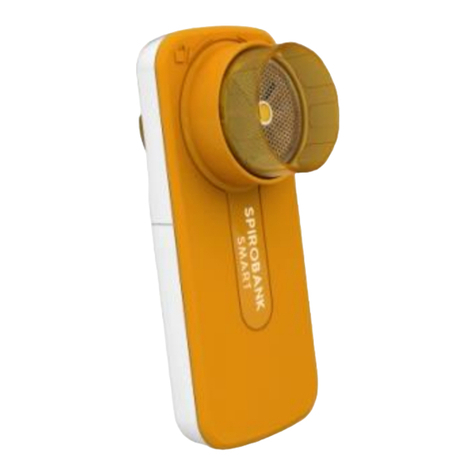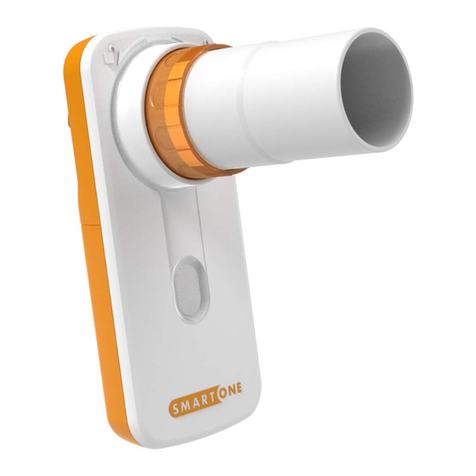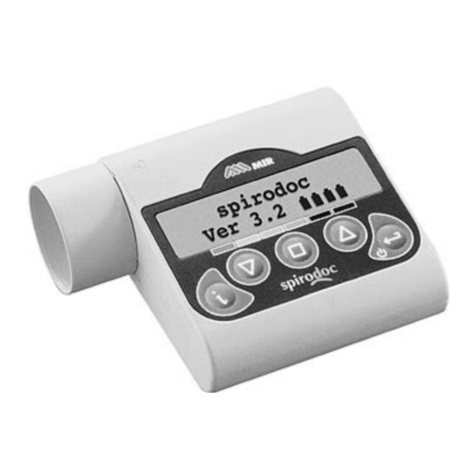INDEX
1. INTRODUCTION .............................................................................................................................................................................................. 4
1.1 Intended use ............................................................................................................................................................................................ 4
1.1.1 User category ........................................................................................................................................................................................... 4
1.1.2 Ability and experience required.................................................................................................................................................................... 4
1.1.3 Operating Environment ............................................................................................................................................................................. 4
1.1.4 Homecare usage........................................................................................................................................................................................ 4
1.1.5 Patient effect on the use of the device........................................................................................................................................................... 5
1.1.6 Limitations of use - Contraindications .......................................................................................................................................................... 5
1.2 Important safety warnings .......................................................................................................................................................................... 5
1.2.1 Danger of cross-contamination.................................................................................................................................................................... 5
1.2.2 Turbine ................................................................................................................................................................................................... 6
1.2.3 Mouthpiece.............................................................................................................................................................................................. 6
1.2.4 Oximetry sensors ...................................................................................................................................................................................... 6
1.2.5 Device..................................................................................................................................................................................................... 7
1.3 Lithium-ion battery pack warning................................................................................................................................................................. 7
1.4 Labels and symbols ................................................................................................................................................................................... 9
1.4.1 Identification label..................................................................................................................................................................................... 9
1.4.2 CE mark for medical devices....................................................................................................................................................................... 9
1.4.3 Electrical safety symbol............................................................................................................................................................................ 10
1.4.4 Warning symbol for the USB .................................................................................................................................................................... 10
1.4.5 Warning symbol for the SpO2 port for oximetry .......................................................................................................................................... 10
1.4.6 Warning symbol for the WEEE................................................................................................................................................................. 10
1.4.7 FDA and FCC Warnings .......................................................................................................................................................................... 10
1.4.8 (ESD) Electrostatic discharge sensitivity symbol........................................................................................................................................... 10
1.4.9 Information regarding the protection against the ingress of liquids................................................................................................................... 11
1.4.10 Symbol for devices that include RF transmitter........................................................................................................................................ 11
1.5 Product description ................................................................................................................................................................................. 11
1.6 Technical specification............................................................................................................................................................................. 12
1.6.1 Features of the spirometer ........................................................................................................................................................................ 13
1.6.2 Oximeter features.................................................................................................................................................................................... 13
1.6.3 Other features ........................................................................................................................................................................................ 14
2. FUNCTIONING OF THE SPIROBANK II ......................................................................................................................................................... 14
2.1 switch on and switch off the device............................................................................................................................................................ 14
2.2 Energy saving......................................................................................................................................................................................... 15
2.3 Main screen............................................................................................................................................................................................ 15
2.4 Symbols and Icons .................................................................................................................................................................................. 15
2.5 Service menu.......................................................................................................................................................................................... 16
2.5.1 Turbine calibration .................................................................................................................................................................................. 18
2.6 Patient Data ........................................................................................................................................................................................... 19
2.6.1 Inserting data of a new patient................................................................................................................................................................... 20
2.6.2 Patient data modification.......................................................................................................................................................................... 20
2.7 Visualization of memory data .................................................................................................................................................................... 20
2.7.1 Database research modality....................................................................................................................................................................... 20
2.7.2 Visualization of database info.................................................................................................................................................................... 21
2.8 On line mode ......................................................................................................................................................................................... 21
2.9 Spirometry testing ................................................................................................................................................................................... 21
2.9.1 FVC test................................................................................................................................................................................................ 22
2.9.2 POST test, after drug administration .......................................................................................................................................................... 22
2.10 Viewing the spirometric results.................................................................................................................................................................. 23
2.10.1 Spirometry test interpretation ............................................................................................................................................................... 23
2.11 Oximetry Testing .................................................................................................................................................................................... 24
2.11.5 Instructions for Adult Single Patient Sensor............................................................................................................................................ 26
3. DATA TRANSMISSION.................................................................................................................................................................................... 27
3.1 PC connection via USB port ..................................................................................................................................................................... 27
3.2 Internal software upgrade ......................................................................................................................................................................... 27
4. MAINTENANCE ............................................................................................................................................................................................. 27
4.1 Oximetry sensor cleaning ......................................................................................................................................................................... 27
4.2 Changing the adhesive wrap sensor ............................................................................................................................................................ 28
4.3 Battery charging...................................................................................................................................................................................... 28
5. PROBLEM SOLVING....................................................................................................................................................................................... 28
LIMITED WARRANTY CONDITIONS ..................................................................................................................................................................... 31
ANNEX 3 INFORMATION FOR CORRECT USE IN AN ELECTROMAGNETIC ENVIRONMENT..................................................................... 32

































